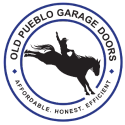A functional garage door is crucial to your home’s security and convenience but is easily overlooked when considering routine household maintenance. Like any other mechanical system in your home, garage doors require regular upkeep to maintain optimal working conditions and extend their lifespan. Following a maintenance schedule helps you avoid unexpected problems and saves you money in the long run by preventing costly repairs and early replacements.
In this blog post, we will explore essential garage door maintenance tips that are easy to follow and will help keep your garage door working smoothly, safely, and efficiently. These tips cover regular visual inspections, basic cleaning, lubrication, and other crucial aspects of garage door maintenance that homeowners often overlook. We aim to help you be proactive in your approach to garage door care, which will contribute to this critical home component’s overall safety, functionality, and longevity.
Ignoring garage door maintenance can lead to various issues, such as noisy operation, slow or uneven movement, and even complete malfunction. A poorly maintained garage door can pose a significant safety risk to you and your family. Therefore, performing regular maintenance checks and promptly addressing issues is essential for your home’s safety and security.
Conduct a Visual Inspection
A simple yet critical step in garage door maintenance is conducting regular visual inspections. Monthly checks can help you spot potential issues before they become bigger problems and ensure all components function correctly. When performing a visual inspection, pay attention to the following elements:
1. Springs: Look for any signs of wear or damage, such as broken or stretched coils. Do not attempt to repair or replace garage door springs on your own, as they are under tension and can cause serious injury. Call a professional for assistance in this case.
2. Cables: Check for any fraying or other signs of damage, and consult a professional if you notice any issues.
3. Rollers: Look for damaged or worn-out rollers that might require replacement.
4. Tracks: Examine the tracks for any misalignment, damage, or debris that could impede the garage door’s movement.
5. Door panels: Inspect the door panels for signs of damage, rust, or peeling paint that may need attention.
Lubricate Moving Parts
Proper lubrication is vital in maintaining the smooth operation of your garage door and reducing wear on its various components. At least twice a year, apply a high-quality lubricant to the following parts:
1. Rollers: Ensure that you lubricate both steel and nylon rollers. Avoid lubricating the roller track, as this could lead to a slippery surface and cause the door to slip from the track.
2. Hinges: Apply lubricant to the hinge pivot points.
3. Springs: Lubricate the springs to reduce friction and promote smooth door operation.
4. Tracks: While you should avoid lubricating the roller track, it’s essential to lubricate the vertical section of the door track.
Clean and Inspect the Weather Seal
The weather seal, located at the bottom of your garage door, keeps the elements out and helps maintain your garage’s internal temperature. Over time, the seal can crack or harden, losing its effectiveness. Regularly clean the weather seal using a mild detergent and brush, and inspect it for any signs of wear or damage that may require a replacement.
Test Safety Features
Modern garage doors come equipped with various safety features designed to prevent accidents or injuries. Testing these mechanisms regularly is essential to ensure they’re functioning properly. To check your garage door’s safety features, perform the following tests:
1. Balance test: Disconnect the garage door opener and manually lift the door halfway. The door should remain in place on its own. If it starts to move, the springs may need adjustment or replacement, which a professional should do.
2. Auto-reverse test: Place a block of wood, at least 1.5 inches high, in the center of the garage door’s path. When the door comes into contact with the wood, it should automatically reverse. If it doesn’t, adjustments may be needed.
3. Photo-eye test: Clean the photo-eye sensors with a soft cloth and mild cleaner, then test their alignment by interrupting the sensors’ beam while the door is closing. The door should reverse immediately. If not, the sensors may need alignment or repair.
Address Issues Promptly
While conducting your routine maintenance checks, you may encounter issues requiring professional attention, such as damaged springs or malfunctioning garage door openers. Don’t put off dealing with these problems, as they could lead to more significant concerns and compromise your home’s safety.
Conclusion
Regular garage door maintenance is essential for ensuring your investment’s safety, functionality, and longevity. With these tips, you’re well-equipped to take proactive steps in caring for your garage door and addressing any issues that may arise. However, if you’re ever unsure about performing maintenance tasks or dealing with repairs, remember that the experts at Old Pueblo Garage Doors LLC are just a call away! Entrust our experienced team to handle your garage door needs so you can enjoy peace of mind and a fully operational door for years.
